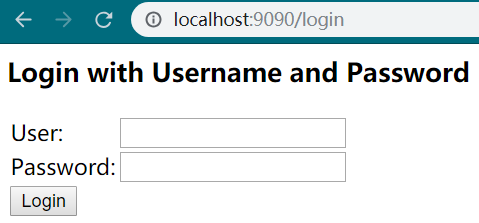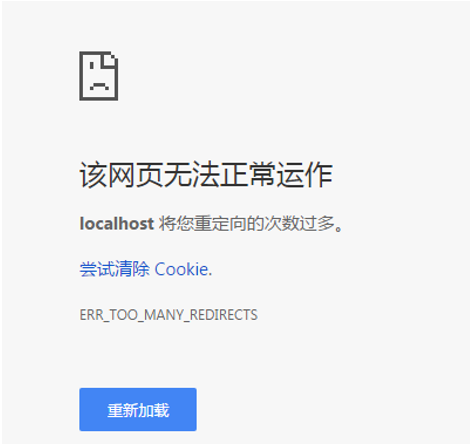一、Spring Security简介
Spring Security是一个能够为基于Spring的企业应用系统提供声明式的安全访问控制解决方案的安全框架。它提供了一组可以在Spring应用上下文中配置的Bean,充分利用了Spring IoC,DI(控制反转Inversion of Control ,DI:Dependency Injection 依赖注入)和AOP(面向切面编程)功能,为应用系统提供声明式的安全访问控制功能,减少了为企业系统安全控制编写大量重复代码的工作。
Spring security主要是从两个方面解决安全性问题:
- web请求级别:使用servlet过滤器保护web请求并限制URL级别的访问
- 方法调用级别:使用Spring AOP保护方法调用,确保具有适当权限的用户采用访问安全保护的方法.
二、入门小案例
2.1 使用系统默认的登录页
(1)创建工程spring-security-demo。pom.xml的内容为:
<?xml version="1.0" encoding="UTF-8"?> <project xmlns="http://maven.apache.org/POM/4.0.0" xmlns:xsi="http://www.w3.org/2001/XMLSchema-instance" xsi:schemaLocation="http://maven.apache.org/POM/4.0.0 http://maven.apache.org/xsd/maven-4.0.0.xsd"> <modelVersion>4.0.0</modelVersion> <groupId>cn.itcast</groupId> <artifactId>spring-security-demo</artifactId> <version>1.0-SNAPSHOT</version> <packaging>war</packaging> <properties> <spring.version>4.2.4.RELEASE</spring.version> </properties> <dependencies> <dependency> <groupId>org.springframework</groupId> <artifactId>spring-core</artifactId> <version>${spring.version}</version> </dependency> <dependency> <groupId>org.springframework</groupId> <artifactId>spring-web</artifactId> <version>${spring.version}</version> </dependency> <dependency> <groupId>org.springframework</groupId> <artifactId>spring-webmvc</artifactId> <version>${spring.version}</version> </dependency> <dependency> <groupId>org.springframework</groupId> <artifactId>spring-context-support</artifactId> <version>${spring.version}</version> </dependency> <dependency> <groupId>org.springframework</groupId> <artifactId>spring-test</artifactId> <version>${spring.version}</version> </dependency> <dependency> <groupId>org.springframework</groupId> <artifactId>spring-jdbc</artifactId> <version>${spring.version}</version> </dependency> <dependency> <groupId>org.springframework.security</groupId> <artifactId>spring-security-web</artifactId> <version>4.1.0.RELEASE</version> </dependency> <dependency> <groupId>org.springframework.security</groupId> <artifactId>spring-security-config</artifactId> <version>4.1.0.RELEASE</version> </dependency> <dependency> <groupId>javax.servlet</groupId> <artifactId>servlet-api</artifactId> <version>2.5</version> <scope>provided</scope> </dependency> </dependencies> <build> <plugins> <!-- java编译插件 --> <plugin> <groupId>org.apache.maven.plugins</groupId> <artifactId>maven-compiler-plugin</artifactId> <version>3.2</version> <configuration> <source>1.7</source> <target>1.7</target> <encoding>UTF-8</encoding> </configuration> </plugin> <plugin> <groupId>org.apache.tomcat.maven</groupId> <artifactId>tomcat7-maven-plugin</artifactId> <configuration> <!-- 指定端口 --> <port>9090</port> <!-- 请求路径 --> <path>/</path> </configuration> </plugin> </plugins> </build> </project>
(2)创建web.xml
<?xml version="1.0" encoding="UTF-8"?> <web-app xmlns:xsi="http://www.w3.org/2001/XMLSchema-instance" xmlns="http://java.sun.com/xml/ns/javaee" xsi:schemaLocation="http://java.sun.com/xml/ns/javaee http://java.sun.com/xml/ns/javaee/web-app_2_5.xsd" version="2.5"> <context-param> <param-name>contextConfigLocation</param-name> <param-value>classpath:spring-security.xml</param-value> </context-param> <listener> <listener-class>org.springframework.web.context.ContextLoaderListener</listener-class> </listener> <filter> <filter-name>springSecurityFilterChain</filter-name> <filter-class>org.springframework.web.filter.DelegatingFilterProxy</filter-class> </filter> <filter-mapping> <filter-name>springSecurityFilterChain</filter-name> <url-pattern>/*</url-pattern> </filter-mapping> </web-app>
(3)创建index.html
<!DOCTYPE html> <html lang="en"> <head> <meta charset="UTF-8"> <title>spring security demo</title> </head> <body> 这时spring security的一个小案例 </body> </html>
(4)创建spring 配置文件spring-security.xml
<?xml version="1.0" encoding="UTF-8"?> <beans:beans xmlns="http://www.springframework.org/schema/security" xmlns:beans="http://www.springframework.org/schema/beans" xmlns:xsi="http://www.w3.org/2001/XMLSchema-instance" xsi:schemaLocation="http://www.springframework.org/schema/beans http://www.springframework.org/schema/beans/spring-beans.xsd http://www.springframework.org/schema/security http://www.springframework.org/schema/security/spring-security.xsd"> <!-- 页面拦截规则,use-expressions:是否启动SPEL表达式 默认是true --> <http use-expressions="false"> <!-- 当前用户必须有ROLE_USER的角色 才可以访问根目录及所属子目录的资源 /* 表示的是该目录下的资源,只包括本级目录不包括下级目录 /** 表示的是该目录以及该目录下所有级别子目录的资源 --> <intercept-url pattern="/**" access="ROLE_USER" /> <!--开启表单登陆--> <form-login/> </http> <!-- 认证管理器 --> <authentication-manager> <authentication-provider> <user-service> <user name="admin" password="123456" authorities="ROLE_USER"/> </user-service> </authentication-provider> </authentication-manager> </beans:beans>
注意:use-expressions 为是否使用使用 Spring 表达式语言( SpEL ),默认为true ,如果开启,则拦截的配置应该写成以下形式
<intercept-url pattern="/**" access="hasRole('ROLE_USER')" />
此案例我们没有登录页,而是使用了系统自动生成的登陆页,效果如下:

2.2 用户自定义登录页
实际开发中,我们不可能使用系统生成的登录页,而是使用我们自己的登录页。
(1)构建登陆页:login.html
<!DOCTYPE html> <html lang="en"> <head> <meta charset="UTF-8"> <title>login</title> </head> <body> <form action="/login" method="post"> 用户名:<input type="text" name="username"> 密码:<input type="password" name="password"> <input type="submit" name="submit" value="登录"> </form> </body> </html>
(2)构建登陆失败页 login_error.html
<!DOCTYPE html> <html lang="en"> <head> <meta charset="UTF-8"> <title>login_error</title> </head> <body> 登录失败! </body> </html>
(3)修改 spring 配置文件spring-security.xml
<?xml version="1.0" encoding="UTF-8"?> <beans:beans xmlns="http://www.springframework.org/schema/security" xmlns:beans="http://www.springframework.org/schema/beans" xmlns:xsi="http://www.w3.org/2001/XMLSchema-instance" xsi:schemaLocation="http://www.springframework.org/schema/beans http://www.springframework.org/schema/beans/spring-beans.xsd http://www.springframework.org/schema/security http://www.springframework.org/schema/security/spring-security.xsd"> <!--以下页面不拦截--> <http pattern="/login.html" security="none"></http> <http pattern="/login_error.html" security="none"></http> <!-- 页面拦截规则,use-expressions:是否启动SPEL表达式 默认是true --> <http use-expressions="false"> <!-- 当前用户必须有ROLE_USER的角色 才可以访问根目录及所属子目录的资源 /* 表示的是该目录下的资源,只包括本级目录不包括下级目录 /** 表示的是该目录以及该目录下所有级别子目录的资源 --> <intercept-url pattern="/**" access="ROLE_USER" /> <!--开启表单登陆--> <!--login-page:指定登录页面 default-target-url:指定了成功进行身份验证和授权后默认呈现给用户的页面。 authentication-failure-url:指定了身份验证失败时跳转到的页面。 --> <form-login login-page="/login.html" default-target-url="/index.html" authentication-failure-url="/login_error.html"/> <!--csrf disabled="true",关闭csrf --> <csrf disabled="true"/> </http> <!-- 认证管理器 --> <authentication-manager> <authentication-provider> <user-service> <user name="admin" password="123456" authorities="ROLE_USER"/> </user-service> </authentication-provider> </authentication-manager> </beans:beans>
注意:
a.如果希望某资源不拦截时,需要设置security="none",比如你自定义了登录页面,如果你没有设置登录页security="none" ,将会出现以下错误:

b.记得关闭csrf ,如果不加会出现错误

CSRF(Cross-site request forgery)跨站请求伪造,也被称为“One Click Attack”或者Session Riding,通常缩写为CSRF或者XSRF,是一种对网站的恶意利用。